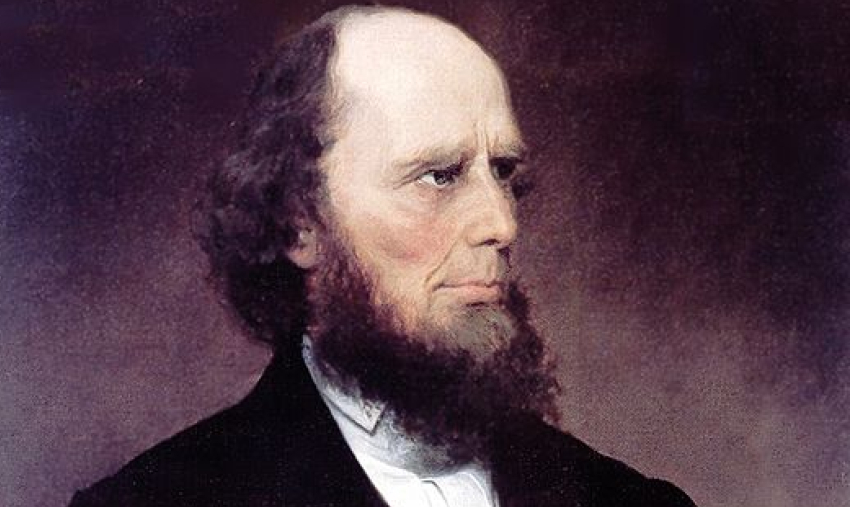Charles Finney-Power From on High
 Finney continued to preach the Gospel with increasing power and results. Most of his meetings were in the northwestern part of the United States, but he also traveled as far away as England with the same revival results there.
Finney continued to preach the Gospel with increasing power and results. Most of his meetings were in the northwestern part of the United States, but he also traveled as far away as England with the same revival results there.
For the continuance of the spiritual power that moved through him, Finney depended entirely upon his personal fasting and prayer and upon the prayers of others. He found that whenever the spirit of prayer left him, the convicting power of the Holy Spirit also left him. Wherever that happened, he would redouble his prayer efforts and the power would return.
Sometimes the power of God was so strong in Finney’s meetings that almost the entire audiences fell on their knees in prayer, or were prostrated on the floor, overwhelmed by the convicting power of the Holy Spirit. Sometimes when Finney was in the pulpit, he felt as if the power of the Holy Spirit had almost lifted him off his feet.
Although many people did not believe that manifestations of the Holy Spirit’s power would accompany the Spirit’s moral work, in almost every Finney meeting when the moral work was deep and powerful, when people were strongly convicted of their sins and of judgment, there were physical manifestations of the power of the Holy Spirit. It is been reported that in several major cities in New York State, when Finney was holding meetings—cities like Syracuse, Rochester, Utica, Albany—a holy power would seem to settle upon the entire city.
Businessmen traveling through the city by train testified of being convicted of their sins as they sat in their railroad car. At times, visitors to the cities would be drawn to his meetings even though they did not know that meetings were being held.
Sometimes sinners were brought under conviction of sin almost as soon as they entered a city where revival had broke out. As revivals continued, the convicting power of the Holy Spirit so poured through Finney that people were often brought under conviction just by his presence.
One notable example reportedly took place in a cotton mill near the village of Whitesboro, about 4 miles west of Utica where Finney was living. This is the record of what Mr. Finney experienced:
Mr. Finney once visited a factory to see the machinery. Because he had just come from revival, he was in a reverent mood. All of the workers knew who he was. One lady, who saw him as she was working, made a rude comment to her neighbor and then laughed. Mr. Finney stopped and looked at her with sorrow in his eyes. She stopped working, breaking her thread. She then became so upset that she could not repair the thread and start again.
Trying to calm herself, she looked out the window. But, again and again, her emotions got the best of her. Finally to calm herself, she looked out the window. But, again and again, her emotions got the best of her. Finally she sat down and cried. Mr. Finney then approached her and spoke with her. She soon showed a deep sense of sin. The feeling spread through the establishment like fire, and in a few hours almost every person employed there was under conviction.
The feeling was so pervasive that the owner, though a worldly man, was astounded and stopped all work to hold a prayer meeting. The owner thought it more important that their souls should be saved than the factory to continue production. In a few days, the owner nearly all the employees (about 3000) were fully converted.
The Lord’s rebuke of this woman’s comment through Mr. Finney’s reverent, yet compassionate, reaction brought her under conviction. Seeing this undoubtedly inspired the massive revival.
Charles Finney had the longest sustained period of revivals of any minister in Christian history. From the first day of his conversion in 1821 and continuing through his time as president of Oberlin College there were almost constant revivals.
Wherever there was a period of time when there was not a revival, Finney would retreat to his prayer closet until the spirit of prayer came upon him and soon revival would break out. He did not, however depend upon his prayers alone but would always solicit prayer from anyone and everyone around him whom he knew also had a spirit of prayer and a heart for revival. The prayers never failed, revival always came.
Finney was active in two Great American Awakenings. What has been called the Second Great American Awakenings in the 1830’s and 1840s, and the Third Great American Awakening which was a revival in 1858-1859.
The great revival of 1858-1859, which was brought to a halt by the Civil War, was said to be one of the greatest revivals in the world’s history, and was a direct result of Finney’s revival meetings. Some historians on revival have said that it was the greatest revival of religion the world has ever seen.”
It has been estimated that 600,000 people were brought to Christ in this revival. Every prophet who brought a true message from God never spoke out of his own initiative or from his own thinking, reasoning, or understanding, but he was inspired (prompted or “carried along”) by the Holy Spirit. That made his message more than human; it became a message from God Himself.
We can see it from the example of Charles Finney’s power as a preacher. He consecrated himself as a whole offering on God’s altar and zeal was to glorify God in saving and sanctifying souls.
Sources: Charles G. Finney, How to Experience Revival, (Published by Whitaker House (Excerpted from Finney’s Sermons on Revival and compiled by E.E. Shelhamer 1984.